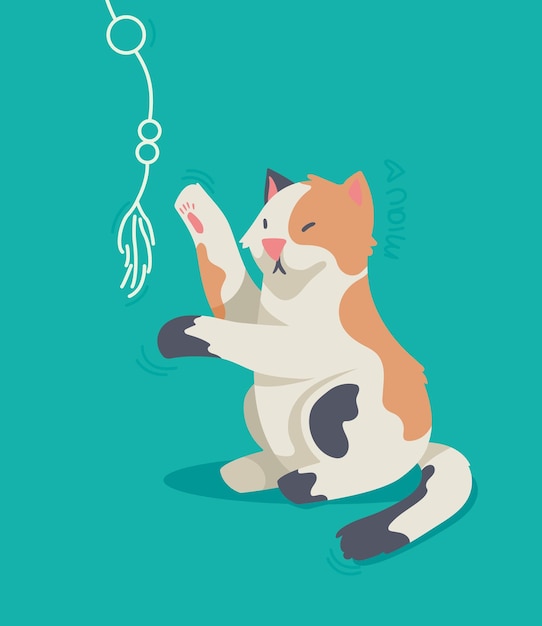The Finest Dust-Free Cat Litter Alternatives
Wiki Article

In the last few years, the pattern towards eco-conscious living has actually extended to every aspect of our lives, including our cherished animals. As animal owners become progressively knowledgeable about the ecological impact of their furry pals, the need for natural cat litter has actually surged. But just what is natural cat litter, and why should pet owners consider making the switch? In this comprehensive guide, we'll delve into the world of natural cat litter to explore its benefits, options, and whatever else you require to understand.
As environmental consciousness grows among pet owners, the mission for sustainable cat litter options has taken center stage. Traditional clay-based litters, while popular, pose ecological issues due to their non-biodegradable nature and the environmentally intensive process of clay extraction. This has actually resulted in a surge in interest for environmentally friendly alternatives that guarantee to be kinder to the planet without compromising on efficiency. This short article digs into the world of cat litter alternatives, highlighting their advantages, disadvantages, and what to consider when making the switch.
Clay-based cat litters, especially those that are non-clumping, have been the go-to choice for years due to their absorbency and odor control properties. Nevertheless, their ecological footprint is concerning. The mining of sodium bentonite, a key part in clumping clay litter, is disruptive to communities. Moreover, these litters do not deteriorate, contributing to land fill waste. In addition, the dust from clay litters can be hazardous to both human and feline breathing systems, triggering pet owners to look for healthier, more sustainable options.
Eco-friendly options are made from a range of plant-based materials, including recycled paper, wood pellets, corn, wheat, and walnut shells. These products not only break down naturally in the environment but likewise frequently originated from renewable resources, lowering the environmental impact connected with their use.
Recycled Paper Litter is made from post-consumer paper waste, developed into pellets or granules. It's highly absorbent, virtually dust-free, and perfect for cats and owners with breathing sensitivities. Nevertheless, it may not manage odors as successfully as other materials and typically does not clump.
Wood Pellets, sourced from lumber scraps, use a natural pine fragrance that neutralizes smells without artificial fragrances. They're low in dust and soak up moisture well, turning into sawdust when wet. The sawdust can be sorted out, making the litter last longer, though some cats might not choose the bigger pellet size.
Corn and Wheat Litter are understood for their clumping capability, comparable to clay litters, making clean-up easy. They're eco-friendly and compostable, with natural enzymes that help control odors. However, they can be costlier than traditional litter and might bring in bugs if not stored effectively.
Walnut Shell Litter utilizes the natural absorbency of crushed walnut shells, providing exceptional odor control and clumping residential or commercial properties. It's dust-free and environmentally friendly however can be more pricey and may not be appropriate for felines with nut allergies.
Silica gel litter, made from silica dioxide sand, oxygen, and water, is another alternative to clay. It's extremely absorbent, manages smells successfully, and is low dust. While not eco-friendly, it's lighter and can last longer than clay litter, requiring less regular changes. However, its higher cost point and the texture, which some cats may find off-putting, cat litter mat are factors to consider for possible users.
Felines can be particular about their litter. Gradually introduce the brand-new litter by blending it with the old, increasing the proportion of the new litter in time to enable your feline to change.
Ecological Impact: Consider the lifecycle of the litter material, from production to disposal, to ensure it lines up with your ecological worths.
Health and wellness: Select dust-free or low-dust choices to safeguard both your and your feline's breathing health. Guarantee the litter is complimentary from chemicals or scents that might hurt your animal.
Expense: While some alternatives may be more costly upfront, their longevity and the amount required per change cat litter can make them cost-effective in the long run.
The Future of Cat Litter Alternatives
The trend towards sustainable pet care items is growing, with developments in cat litter options leading the method. Future advancements may include more efficient biodegradable products, enhanced smell control and clumping innovations, and even litter made from upcycled waste products. As consumer demand for eco-friendly items boosts, cat litter scooper we can anticipate to see a wider series of alternatives that do not jeopardize on benefit or performance.
The shift towards sustainable cat litter alternatives is not simply a pattern but a reflection of a growing awareness of environmental issues amongst animal owners. While conventional clay litters have controlled the marketplace for many years, the range of biodegradable and ingenious products now available offers appealing choices for those wanting to reduce their eco-friendly footprint. By considering factors such as ecological effect, health and safety, and feline acceptance, pet owners can make educated decisions that benefit both their furry companions and the world. As the industry evolves, the future of cat litter looks greener than ever, assuring a great deal for felines, their owners, and the environment.